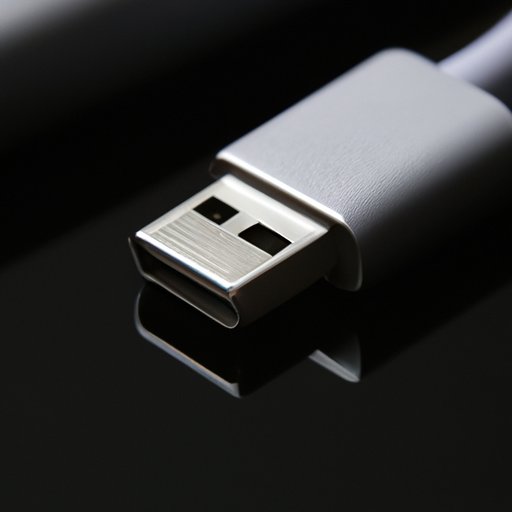Introduction
The USB C port, also known as the USB Type-C port, is a newer type of USB connector that is quickly becoming the new standard for data transfer and power delivery. This type of port offers several advantages over traditional USB connectors, including faster data transfer speeds, improved power delivery and enhanced security features.

USB C: The New Standard for Data Transfer
The USB C port is a reversible connector, meaning it can be plugged in either direction, so users don’t have to worry about inserting it the wrong way. It is also much smaller than other USB types, making it more compact and easier to use. Additionally, USB C ports are capable of delivering more power than other types of USB connectors, making them ideal for powering devices such as laptops and smartphones.
In terms of data transfer, USB C ports offer some advantages over their predecessors. For example, they support higher data transfer speeds than USB 2.0 or 3.0 ports, allowing users to transfer large amounts of data quickly and efficiently. Furthermore, USB C ports are backward compatible with older USB types, allowing users to connect legacy devices to modern computers.

How to Use USB C Ports for Data Transfer
Using USB C ports for data transfer is relatively simple. All you need to do is connect two devices with USB C ports, such as a laptop and an external hard drive, and then follow the on-screen instructions to complete the data transfer. It is important to note that USB C ports are not only used for data transfer, but also for charging devices. Therefore, when connecting two devices with USB C ports, it is important to understand the difference between data transfer and charging.
Understanding the Benefits of USB C Connectors
USB C connectors offer several advantages over other USB types, including faster data transfer speeds, improved power delivery, and enhanced security features. For example, USB C ports support data transfer speeds up to 10 Gbps, which is significantly faster than USB 2.0 or 3.0 ports. Additionally, USB C ports offer improved power delivery, allowing users to charge their devices faster and more efficiently. Finally, USB C ports feature enhanced security features such as authentication protocols, which allow users to securely connect their devices to each other.
Comparing USB C to Other USB Types
When comparing USB C to other USB types, there are a few key differences to consider. For example, USB 3.0 connectors are larger than USB C connectors and do not offer the same level of data transfer speed. Similarly, USB 2.0 connectors are slower than USB C connectors and do not support power delivery. Finally, micro USB connectors are much smaller than USB C connectors, but do not offer the same level of security.

A Guide to Choosing the Right USB C Port for Your Device
Choosing the right USB C port for your device can be tricky, as there are several different standards and types to consider. First, it is important to check if your device is compatible with USB C ports. Once you have established compatibility, you need to identify the best type of connector for your device. To do this, you need to understand the various USB C standards, such as USB 3.1 Gen 1 and USB 3.1 Gen 2, and identify the one that best suits your needs.
Conclusion
The USB C port is quickly becoming the new standard for data transfer and power delivery. It offers several advantages over traditional USB connectors, including faster data transfer speeds, improved power delivery and enhanced security features. When choosing the right USB C port for your device, it is important to consider compatibility, the various USB C standards, and the best type of connector for your device.


